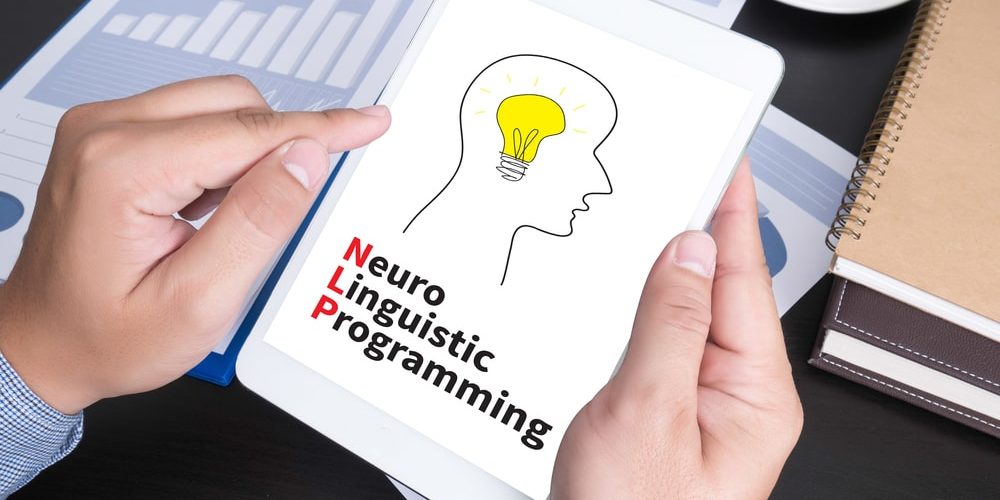The concept of neuro-linguistic programming has been around since the 70s, and has become really popular over the years.
It enables your mind to work and change your reactions to certain thoughts or feelings. But that is just a very simplistic way of viewing NLP. Once you go deeper into the subject you can see just how intricate the topic truly is.
Most probably you already know some NLP techniques, or at least you know how they are often portrayed in popular culture. Any spy movie that dabbles into the subject of mind control essentially tackles the topic of NLP, albeit not very rooted in reality.
What Is Neuro-linguistic Programming, Exactly?
NLP is a psychological approach that works on the idea that one person has the ability to adapt strategies used by other successful individuals and apply them to their persona to achieve their goals. It was developed by John Grinder, a linguist, and Richard Bandler, an information scientist and mathematician, who both came together to develop the concept.
NLP analyzes a person’s actions, speech, thoughts, and feelings, and then, a therapist will build what is called a “map of reality,” tracing the person’s individuality. Then, they will use NLP techniques to help that person take and apply processes used by others that have been successful, replacing the ones deemed unfit or toxic.
The theory states that human behavior cannot be negative, and therefore all our experiences are positive because they provide us with information. NLP also states that an individual can only understand an action experiencing it and processing its results, not just through conceptualization.
How Does NLP Work?
Within the NLP concept, each individual is believed to create a mental map of the world, using the information the brain receives through the senses. Moreover, each person’s map is rather unique, because people tend to place different levels of importance on different senses or information. For instance, some individuals may rely more on their visual perceptions, while others are more attentive to the sounds around them.
The system used by a person to process the world around them is called a PRS, or primary representational system. NLP techniques work on the premise that the PRS can be used to alter a person’s mental map.
Through it, it’s possible to improve a person’s understanding of their behavioral patterns and build a more effective line of communication between the conscious and unconscious processes that occur in our minds. We may consciously know how to respond to certain stimuli, but if our unconscious processes take over, we have little control over the result. NLP is a way to circumvent that and make us feel more in control, in a way.
The Six Levels of Learning
NLP focuses on six logical levels that can allow us to make the changes we want. Practitioners will use these levels in order, try to get the patients to become more aware of their mental map, and teach them how to control it.
The levels are:
- Self-purpose and spirituality;
- Self-identity;
- Beliefs and values;
- Skills and abilities;
- Behaviors;
- Environment;
Through these levels, you can effectively outline a person’s map of the world and their PRS. However, the actual technique NLP practitioners may use during therapy can differ, but they can include:
- Rapport – matching physical behaviors to improve communication;
- Anchoring – turning sensory experiences into triggers;
- Kinesthetic Dissociation – removing negative thoughts and feelings a person associates with a past event;
- Swish Pattern – changing behavioral patterns to get to the desired outcome.
Does NLP It Work?
Here’s where it gets rather tricky.
Pinpointing the exact rate of effectiveness of NLP can be difficult, particularly if you also put it against other established therapies. One of the reasons why this is the case is simply the fact that NLP is not subject to the same standard as CBT (cognitive behavioral therapy).
In the case of CBT, you have strict practices of how these therapies must be conducted, and the results are analyzed by appropriate institutions.
For NLP, no such strict regulations exist, and the course of treatment is often left with the practitioner. Moreover, the results of any success are difficult to measure, and often supplied by the practitioner themselves.
The studies that do exist on NLP, however, at first sight, have mixed results.
One study published by the British Journal of General Practices found that NLP methods have little effect on patients, though the study analyzed the relationship between this method and health-related outcomes. It focused on people suffering from anxiety disorders, morning sickness, weight maintenance, or various phobias and who turned to NLP as a possible solution. In this case, it seems NLP methods did not improve patient conditions.
Another study that focused on the patient’s quality of life found the NLP methods had significantly improved their quality of life and improved psychological symptoms as a result of NLP.
The topic still requires more attention from the medical community in order to identify the exact setting where NLP practices would be most effective.
So far the data we have seems to suggest that while it does not improve a person’s health (the physics), it can have a positive influence on the quality of life and psychology of the individual.
Final Thoughts on NLP
The idea behind NLP is extremely seductive.
Who wouldn’t like to take control over their own mind and not be subjective to any unconscious processes that may guide our decisions?
However, it’s important to note that the effects of NLP are still not completely understood, and until more research is done, we have to be very cautious. While NLP might work well for some patients and conditions, it is not a “one size fits all” solution.
If your loved one is struggling, please reach out to our office for a consultation.







